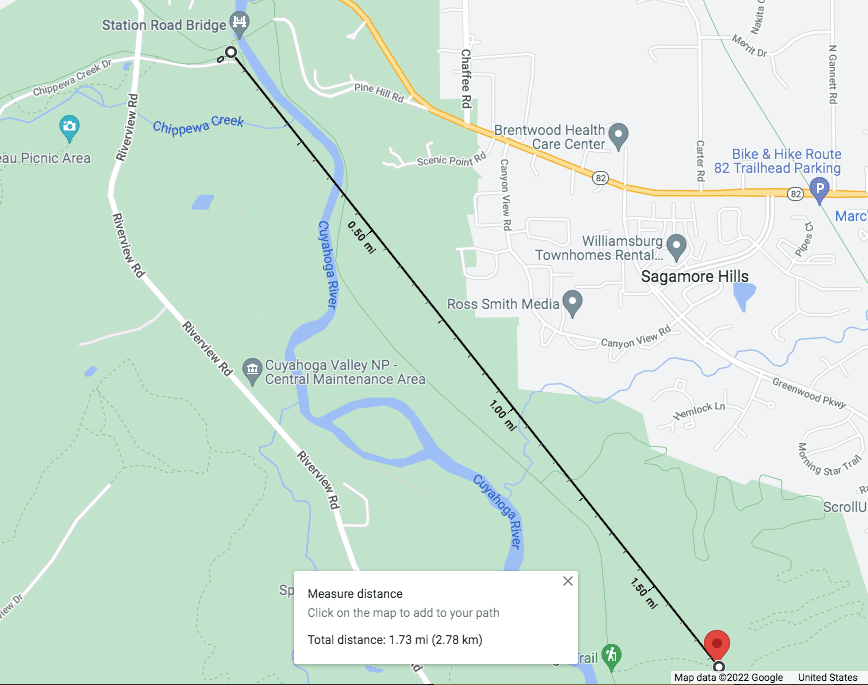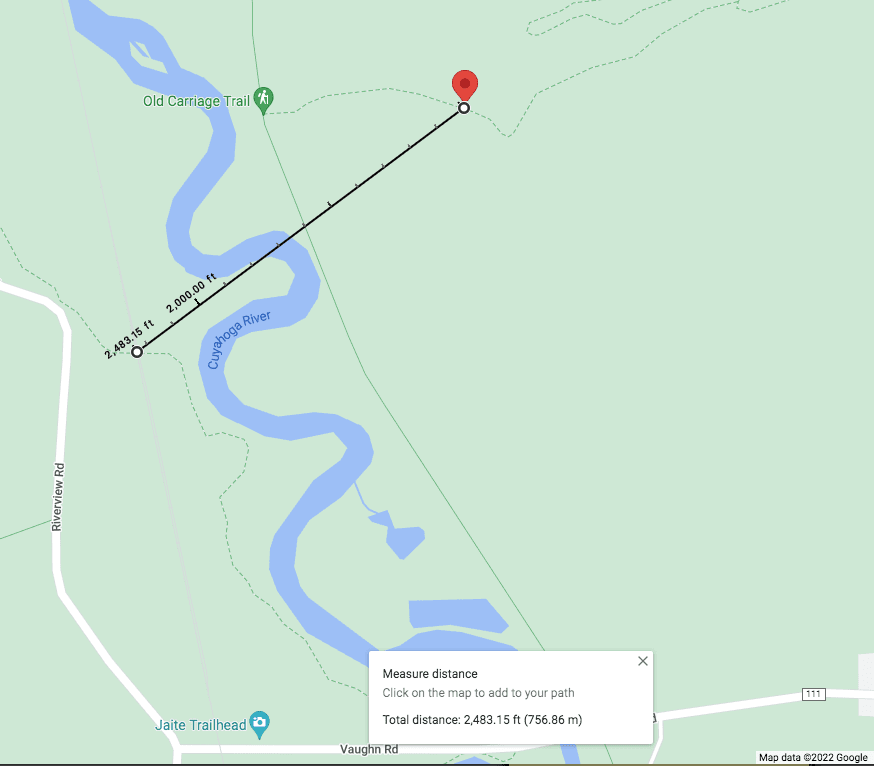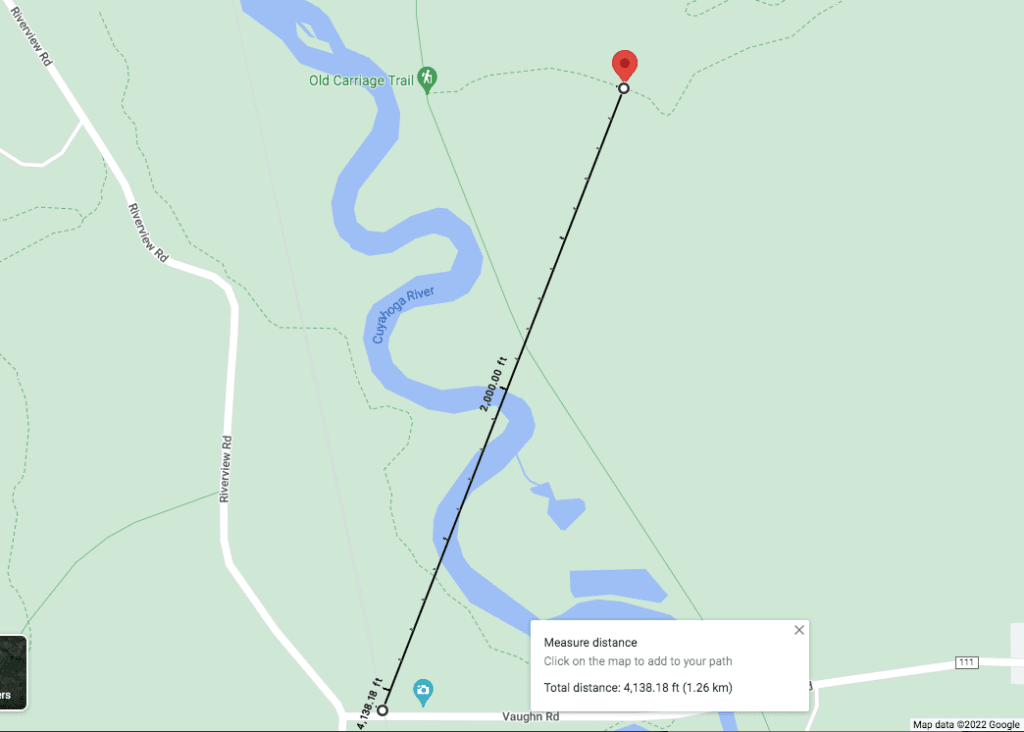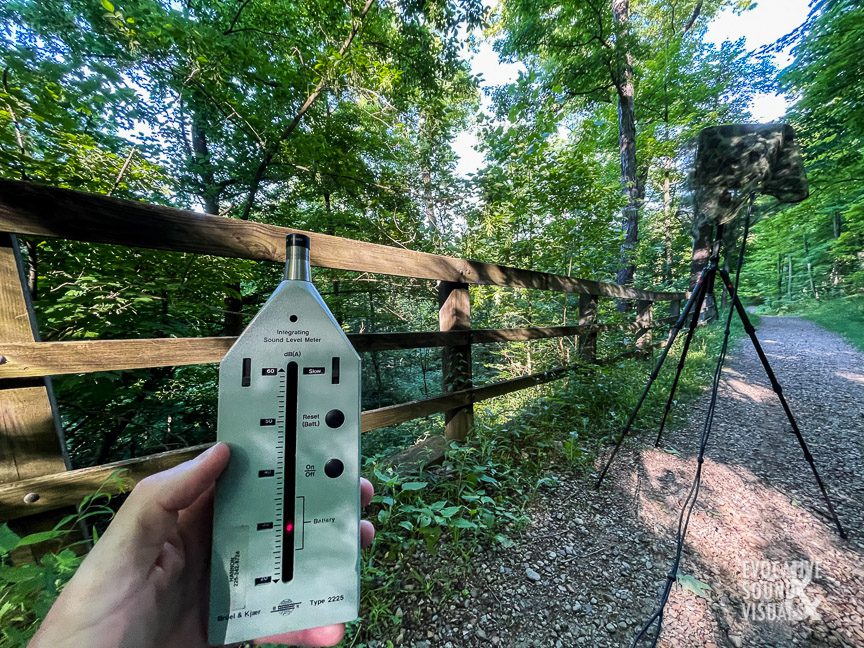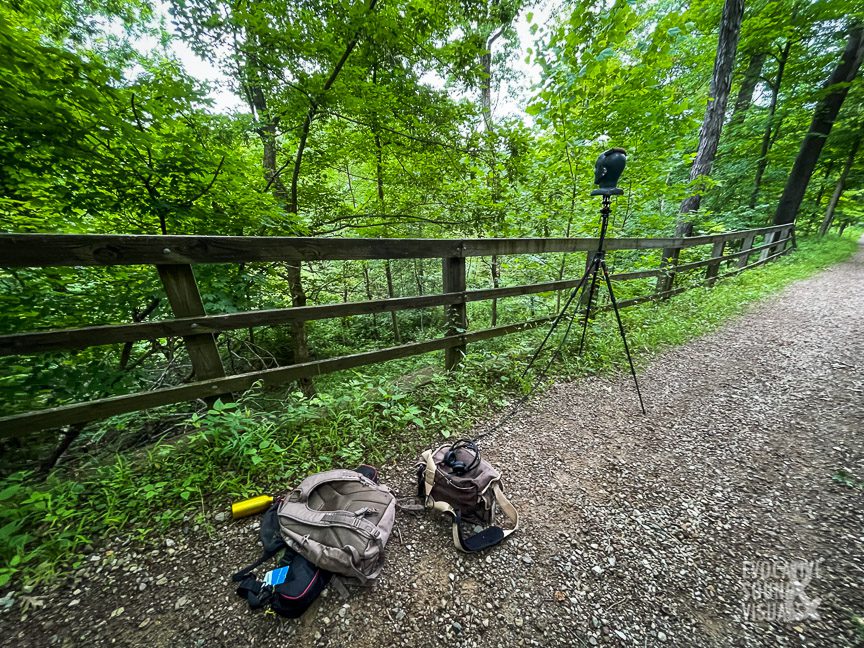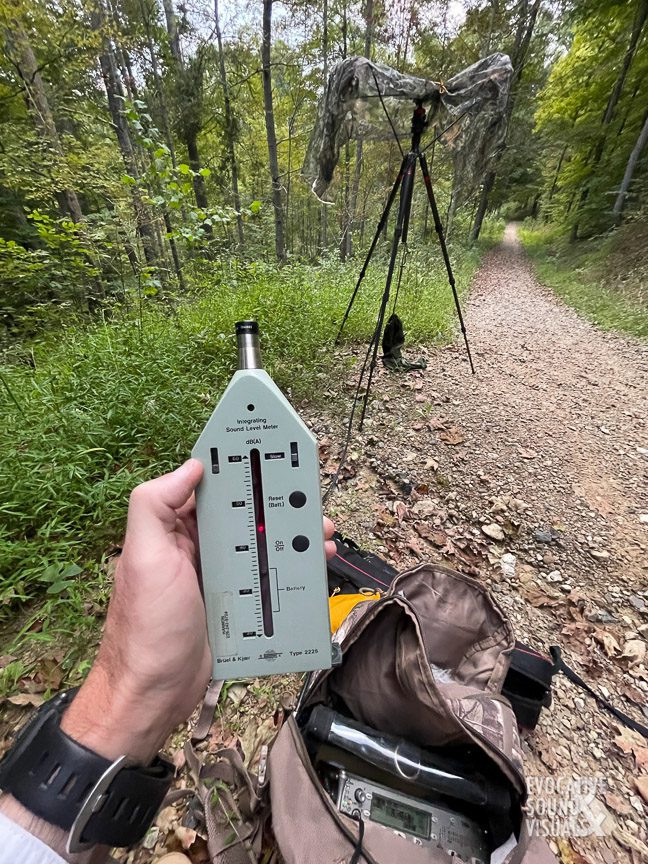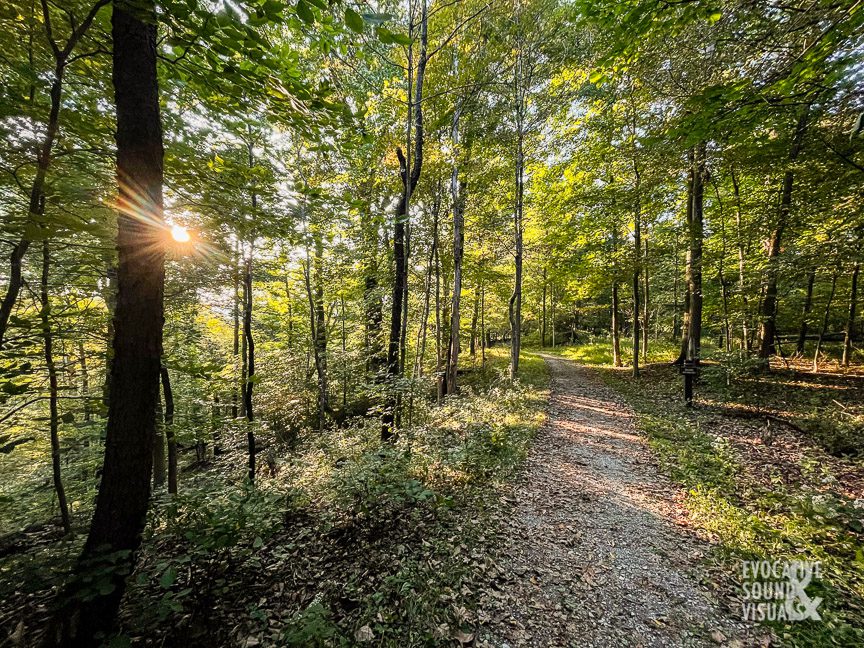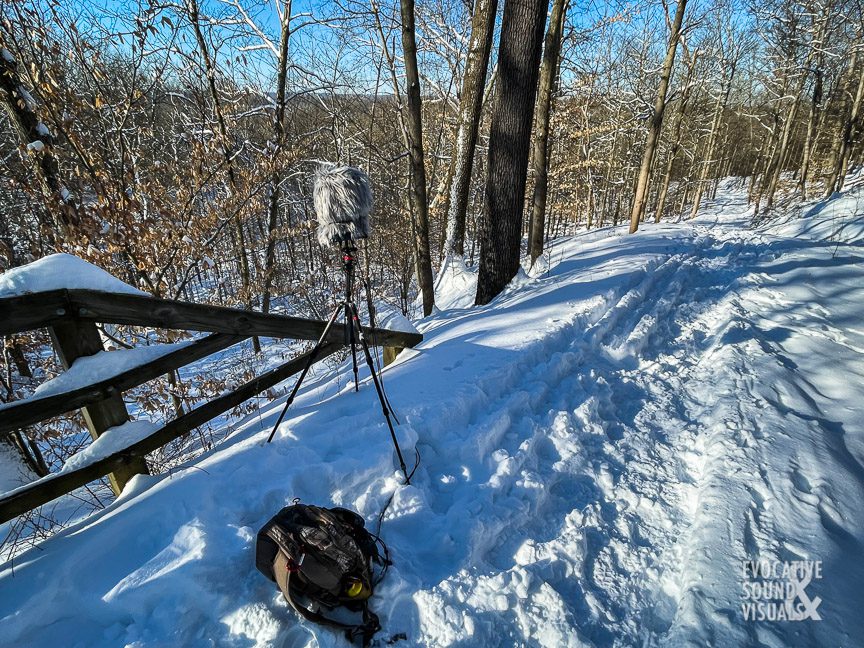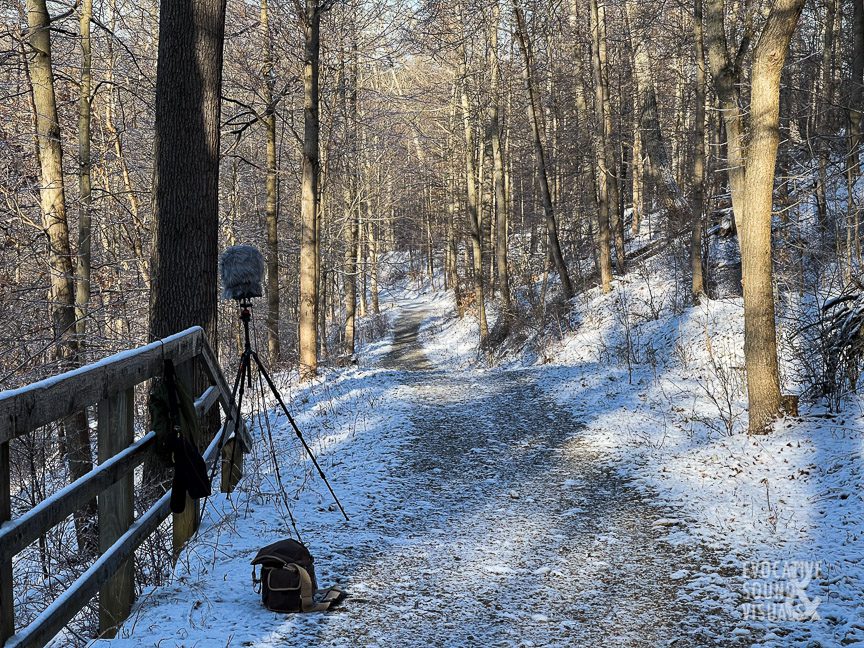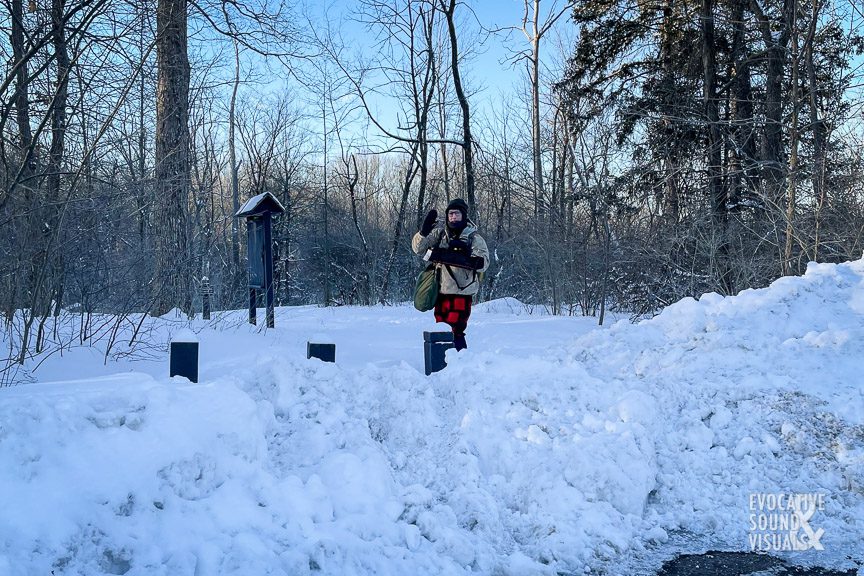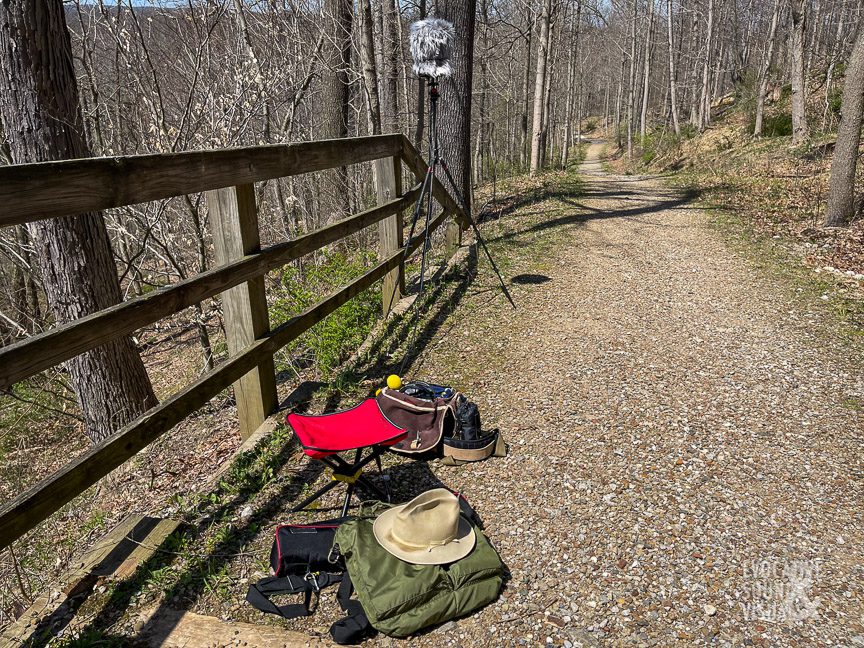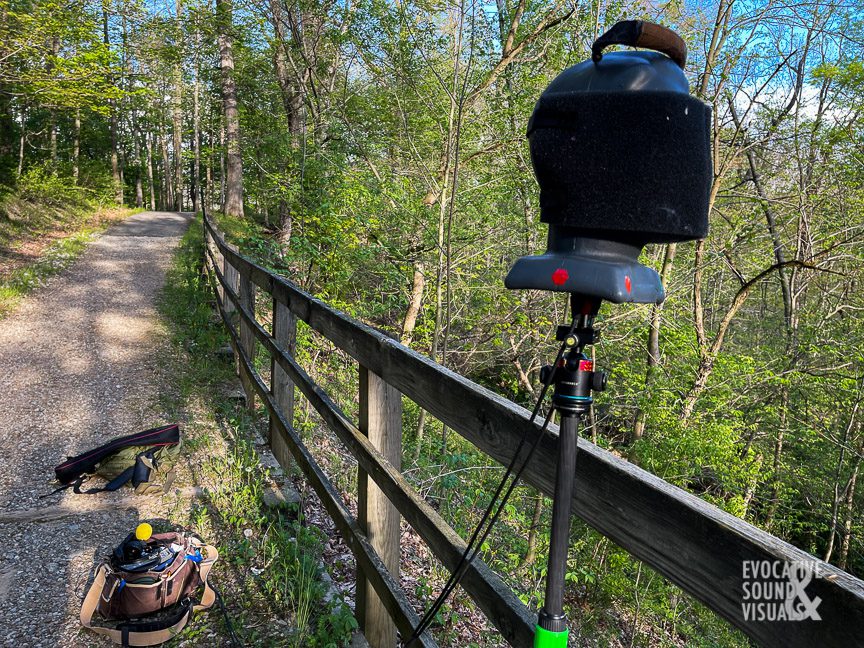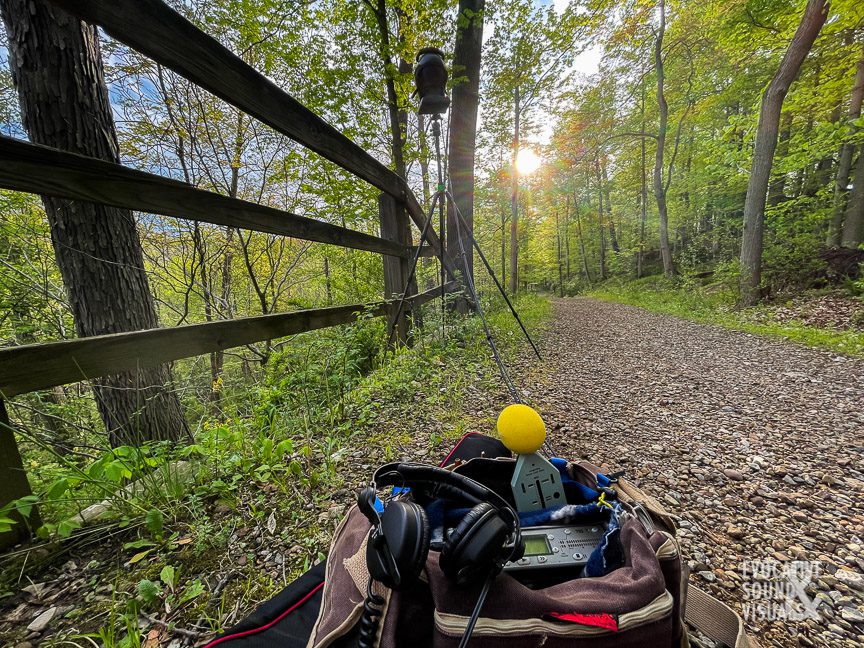If you’ve ever done any backcountry hiking, you know the importance of seeking out quiet. Finding quietude in northeast Ohio, and recording it successfully, can be a Herculean challenge. Nevertheless, ears wide open, I set out to find it.
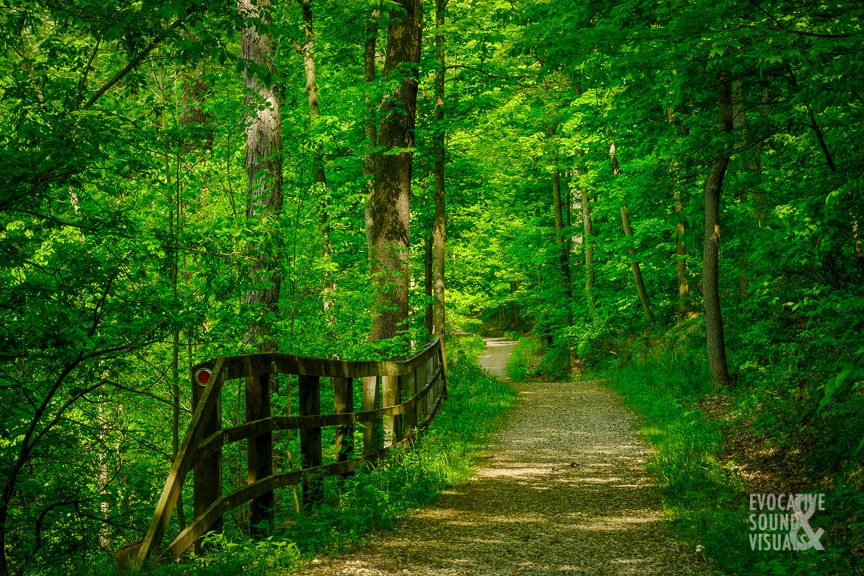
For the past year, during all four seasons, I set up stereo microphones, including my binaural head, capturing the soundscape of the Cuyahoga Valley National Park from the same location. Established in 1974, CVNP lies along a snake-like Cuyahoga River. The park is situated between Cleveland and Akron, two major Rust Belt cities. Two interstates, 271 and 80, cut through the park, crisscrossing at one point. Another, Interstate 77, hugs its west side. That’s a lot of road noise. More than any other national park that I know of.
To a field recordist working in populated America, road noise is enemy number one. Poring over park maps and satellite images, I searched for a location where I thought it would be the least intrusive.
During my initial recording session of Trains in the Valley, I heard the low-end rumble of an approaching train. Come to find out there is an excursion train that runs the length of the park. It was about to pass in the valley below. I love the sound of trains, both up close and distant, for varied reasons.
Right now you’re probably saying, wait a minute, aren’t trains loud? Well yes, they are. Quite loud. Their horns are required to blow at a minimum of 96 decibels. That’s jackhammer loud, or your kid’s mp3 player in their ears at full volume loud. Fortunately, I’ve never lived right next to the tracks. Although some people I’ve spoken with say they like the sound of trains and they live next to a railroad. Go figure. Trains are my noise pollution hypocrisy. I’m okay with that. I hope you are too.
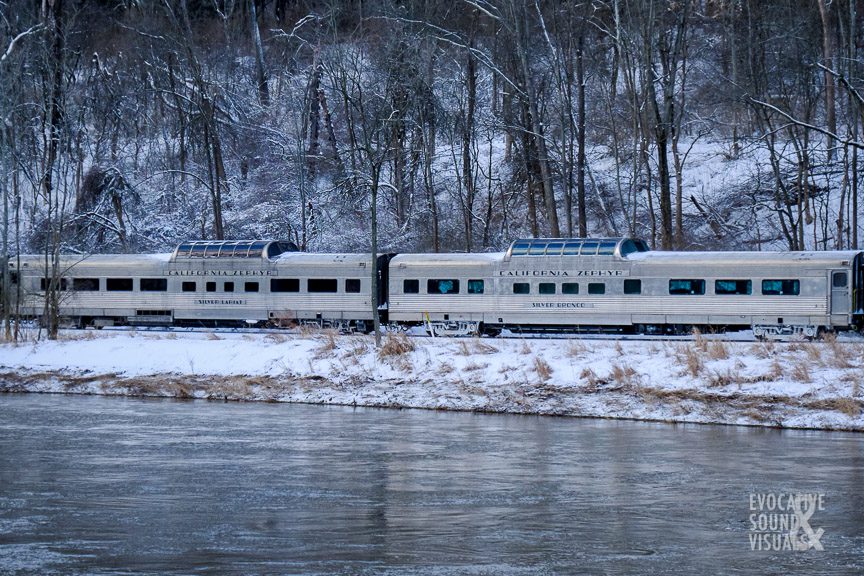
Trains in the Valley blend all four seasons into one continuous 55:19 track. It begins in winter. Woodpeckers drum on bare limbs. A wedge of Canada geese honks as they take to the skies on a bone-chilling morning. Dead leaves, still clinging to their branches, crackle in the wind. Melting icicles drip from naked trees above as the sun’s rays touch them at first light.
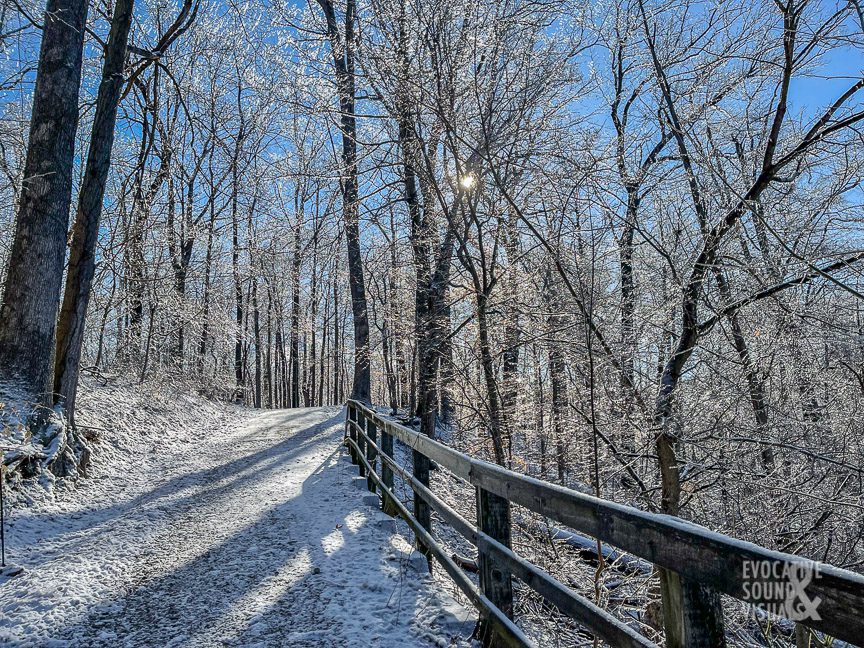
In spring, a pair of white-tailed deer snort back and forth, over and over again, as the steam train approaches. They are either upset with my presence, the train, or both. With summer comes the ever-present sound of crickets chirping through the night. Fall means the return of cooler temperatures. Chipmunks scamper across dry leaves. Deer are still around, as are crickets.
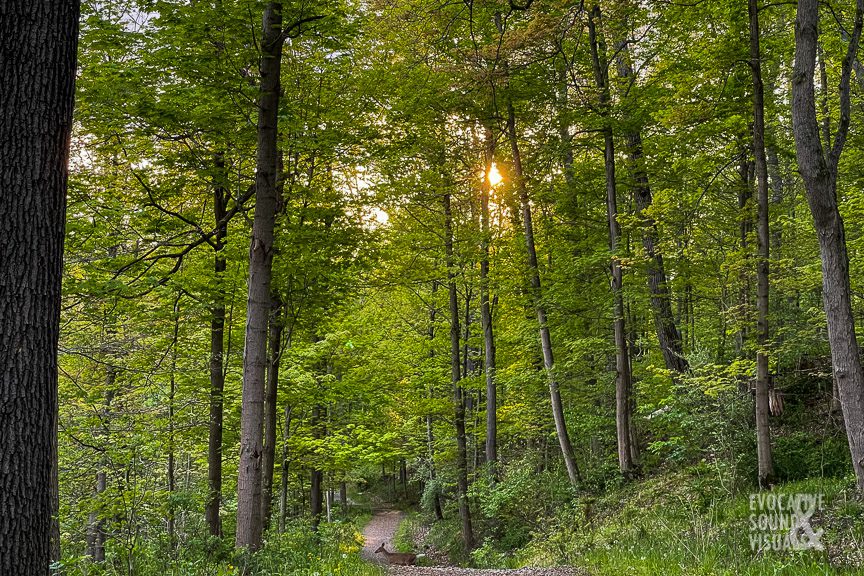
Month by month the train lumbers past. A constant, from north to south and back again. Its steam whistle sounds like a forlorn call in the night. Its steel wheels roll along the tracks like a far-off thunderstorm. The train’s sonic intensity and tone change ever so slightly with each passing season. And you can sit on the gravel path, look up at the trees swaying above your head, swat a few mosquitoes away and take it all in.
Listen to a Preview of Trains in the Valley
Old Carriage Trail Recording Observations
I endeavored to take detailed, albeit not scientific observations during each recording session of Trains in the Valley. Missing only one reading for reasons I don’t recall. Sound travels through varied environments in different ways, if ever so slightly. Thick, humid air will yield a different sonic result than dry, thin air. The same with cold versus warm air. Tree leaves, or the lack thereof, clouds, snow on the ground, all these conditions make a difference in how we perceive sound. My hope is by scanning the results below (shown via PDF), your enjoyment of the album and understanding of the soundscape increases.
* Are you using a mobile device and can’t see the PDF below? Click on the link.
- A Brüel & Kjær 2225 sound level meter, measuring A-weighted decibels in slow (LAS), peak (LAPeak) and a 60-second average (LAeq,60 sec) readings were used exclusively and calibrated before each outing with a B&K 4230 Sound Level Calibrator.
- Microphones always faced due west.
- The excursion train tracks run north to south through Cuyahoga Valley National Park, crossing several roadways and over a meandering Cuyahoga River multiple times.
- There is an approximately 118-foot change in elevation between the valley floor (where the train runs) and the recording position, which is approximately 770 ft. above sea level.
- The steam locomotive is always the Nickel Plate Road 765, a 4,500 horsepower, 404-ton class “S-2” 2-8-4 “Berkshire” type locomotive built in 1944 for the New York, Chicago & St. Louis Railroad, commonly known as the “Nickel Plate Road.”
- Specific diesel-electric locomotives are unknown due to my position in the woods.
Recording Position
Distances From Recording Location to Closest Train Crossings
I purposely positioned microphones near the rim of the valley bowl. The locomotive’s horn or whistle, blowing at crossings up and down the rails, can be heard most clearly at these three crossings.


